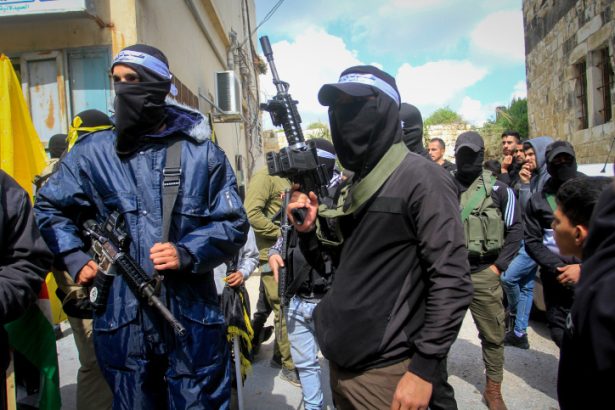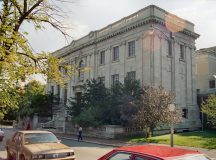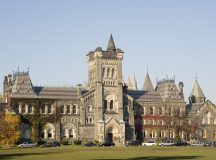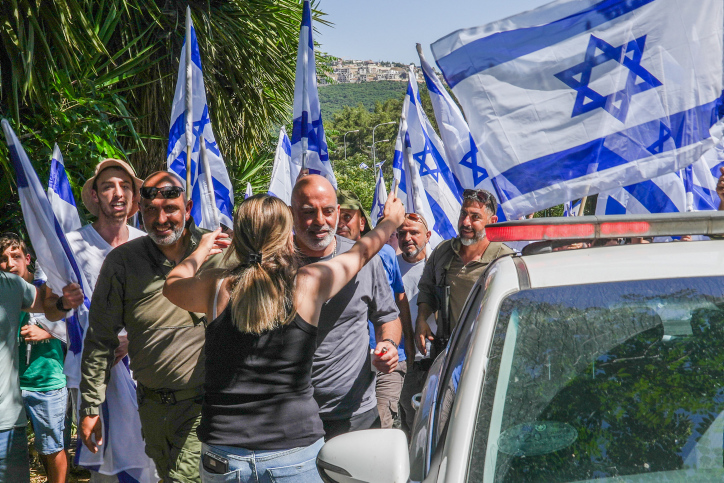This essay seeks to register and understand the deeper causes of the appalling reaction of parts of the western academic left to the massacre perpetrated by Hamas[1] on 7 October 2023. For the mask did not just slip. It was ripped off joyfully, ecstatically even, as if at the end of a masquerade. And what stood revealed was how far the decomposition of a significant part of what passes itself off as the international left has gone. First, let us review some examples.
What They Said
Joseph Massad, professor of Modern Arab Politics and Intellectual History at Columbia University, writing in The Electronic Intifada on the morning after the 7 October massacre, spoke of ‘an innovative Palestinian resistance’ in ‘stunning videos’ of Operation Al-Aqsa Flood. For him this was ‘the Palestinian war of liberation.’ Readers were invited to marvel, with Professor Massad, at the ‘shocking success of the Palestinian offensive,’ the ‘major achievement of the resistance,’ its takeover of several ‘Israeli settler-colonies near the Gaza boundary and even as far away as 22kms, as in the case of Ofakim’. (Of course, these ‘Israeli settler-colonies’ are inside the recognised international borders of Israel proper. If they are ‘settler colonies’, that tells you all you need to know about the popular favourite: ‘from the river to the sea, etc.’)
Professor Massad’s article shared exhilarated reports that thousands of Israelis ‘were fleeing through the desert on foot…with many still hiding in settlements more than 24 hours into the resistance offensive.’ Under the subheading of ‘Jubilation and awe,’ he wrote that: ‘The sight of the Palestinian resistance fighters storming Israeli checkpoints separating Gaza from Israel was astounding.’ There were ‘jubilant Arabs,’ ‘resistance fighters’ who ‘marvelled’ at the rows of abandoned Israeli tanks. For the author, apparently aflame with excitement, this was ‘the stunning victory of the Palestinian resistance.’
Lake Micah, an Assistant Editor at Harper’s Magazine, put it this way: ‘to search for an analogue seems almost inappropriate to Palestinians’ world historical (!) audacity to seize the components of self-determination for themselves, if only because the idiom of liberation invents itself anew with each instance that the yoke of bondage is sloughed off … a near century’s pulverized overtures toward ethnic realization, of groping for a medium of existential latitude – these things culminate in drastic actions in need of no apologia, the thrum of history as it develops is one of force; its inertia and advance require some momentum.’
The prose is clotted, the rhythm onanistic, but the sentiment is clear: there are no, nor should there be any, limits on the glorious, ecstatic violence of the oppressed; they are on a world-historical mission.
Then there is Cornell professor of history, Russell Rickford. Addressing a rally at Cornell on 15 October, that is more than a week after the massacre was carried out, Rickford said of the Hamas pogrom that: ‘It was exhilarating. It was energizing’; and that ‘Palestinians of conscience’ were ‘able to breathe for the first time in years.’ ‘And if they weren’t exhilarated by this challenge to the monopoly of violence, by this shifting of the balance of power, then they would not be human. I was exhilarated.’ (emphasis added)
Exposed, a few days later Professor Rickford thought better of it all, or at least of how he had said it all: ‘I recognize that some of the language I used was reprehensible and did not reflect my values.’ One need not parse the apology in any detail to notice how Rickford attributes the moral collapse of the enunciator to the infelicities of enunciation, rather than to his values, which he cordons off to preserve, unimplicated. He recapitulates this process of splitting-off more than once: ‘I apologize for the horrible choice of words that I used in a portion of a speech that was intended to stress grassroots African American, Jewish and Palestinian traditions of resistance to oppression.’ A few mis-chosen words, much to be regretted. The sentiment behind them, he can assure us, is entirely noble. However, Professor Rickford does not really say which African American or Jewish traditions of resistance to oppression he has in mind, that supposedly draw exhilaration from mass murder, in quite the way he did.
Professor Gilbert Achcar in the department of Development Studies at SOAS, blogged that the ‘amazing and highly daring’ ‘counter-offensive (sic) launched by Hamas’ was ‘a much more spectacular feat’ than the October 1973 war. Going full supersessionist, Professor Achcar rhapsodized that it ‘evokes the boldness of the biblical David in his fight against the giant Goliath’; that Hamas ‘fighters’ ‘executed an amazing and highly daring offensive…’ and that ‘it is not difficult to understand the ‘enough-is-enough’ logic behind Hamas’ counter-offensive (sic).’ Professor Achcar did go on to criticise Hamas from a tactical and strategic point of view (although not, mind you, from a moral point of view) by pointing out that the belief Hamas could achieve victory through intimate mass murder was ‘magical thinking’, the stuff, as it were, of dreams.
Professor Ashok Kumar, senior lecturer in political economy at Birkbeck, posted on twitter/X (since deleted): ‘Sometimes partying on stolen land next to a concentration camp where a million people are starved has consequences.’
Dr Shahd Hammouri, lecturer in law at Kent Law School, wrote that: ‘Resistance by the Palestinian people by all means available at their disposal against an illegal occupying power is a legitimate act.’
Other professors have screamed ‘Go Back to Poland!’ at Jews and torn down posters of the Israeli hostages.
When Did Pogroms Go Progressive?
Leon Trotsky, in his classic 1905, described the absence of limit in the unfolding of an Eastern European pogrom:
The doss-house tramp is king. A trembling slave an hour ago, hounded by police and starvation, he now feels himself an unlimited despot. Everything is allowed to him, he is capable of anything, he is the master of property and honour, of life and death. If he wants to, he can throw an old woman out of a third-floor window together with a grand piano, he can smash a chair against a baby’s head, rape a little girl while the entire crowd looks on, hammer a nail into a living human body … He exterminates whole families, he pours petrol over a house, transforms it into a mass of flames, and if anyone attempts to escape he finishes him off with a cudgel. A savage horde comes tearing into an Armenian alms-house, knifing old people, sick people, women, children … There exist no tortures, figments of a feverish brain maddened by alcohol and fury, at which he need ever stop. He is capable of anything, he dares everything. God save the Tsar!’[2]
Suzan Quitaz has described the terrible footage of the 7 October massacre, which was shown to international journalists to try to combat the rapid and perverse growth of efforts to minimise or deny the pogrom. Quitaz wrote in Fathom:
In the video, terrorists were shouting in Arabic with a Palestinian accent, they looked content and proud as they committed sadistic atrocities. They were talking among themselves saying ‘I swear to Allah, I just killed the coward Jew dog who was hiding under the table.’ That ‘jew dog’ was a young girl who was seen alive in the video hiding under [a] table desk. They shot her at close range. Throughout the video words such as ‘Allahu Akbar’, meaning God is great, ‘shot’, ‘give me a knife’ and ‘pray to Allah to bless me with another Jew dog to kill’ were heard. We saw homes soaked in blood, we saw beheaded people, people slaughtered with knives, young women who had been raped, and people burned beyond recognition. We saw CCTV footage of terrorists standing on roadways in southern Israel shooting at civilian cars as they speed away in fear. A car stops, terrorists surround it and continue shooting at close-range even when it’s clear the occupants are already dead.
So how did parts of the academic left reframe the worst antisemitic pogrom since the Holocaust as ‘resistance’ and ‘liberation’? In part because it now views the Israeli-Palestinian conflict through the lens of ‘settler colonial studies’ and the entire history of the Zionist movement and the Jewish State as ‘Zionist Settler Colonialism’.[3] This paradigm divides the world into a crude and unbridgeable binary of colonisers and the colonised, oppressor and oppressed, ‘whites’ and ‘people of colour’. It presents itself as a form of ‘engaged’ scholarship, but settler colonial studies also reframes and embraces a very particular form of violence – the kind of violence Hamas perpetrated on 7 October, pogromist violence without restraint or limit.
The Left’s Fanonite Detour
Frantz Fanon occupies a position at the intellectual heart of settler colonial studies. He had a particular fascination with violence, seeing it as a cleansing act of self-constitution, a redemptive act of regeneration. This fascination echoes through his book, The Wretched of the Earth.[4] The first chapter, ‘Concerning Violence,’ is a paean to the therapeutic effects of violence for the colonial subject. Even if it is necessary to contextualise Fanon’s treatment of revolutionary violence within the specific historical context of the armed struggle of the FLN in Algeria,[5] nevertheless, there remains an irreducible core which both advocates and justifies violence, attributing to it cathartic and self-actualising attributes for the colonial subject.[6]
National liberation, wrote Fanon ‘is always a violent phenomenon … Decolonization … cannot come as a result of … a friendly understanding … The naked truth of decolonization evokes for us the searing bullets and bloodstained knives which emanate from it.’ He continued, ‘For if the last shall be first, this will only come to pass after a murderous and decisive struggle between the two protagonists … From birth it is clear … that this narrow world, strewn with prohibitions, can only be called into question by absolute violence.’[7]
For Fanon, the zones of coloniser and colonised were delineated as a stark binary: ‘follow the principle of reciprocal exclusivity’ he advised. ‘No conciliation is possible, for of the two terms, one is superfluous… ’[8] He gave violence a constitutive role: ‘For the colonized people this violence, because it constitutes their only work, invests their characters with positive and creative qualities.’[9] It becomes a path to freedom: ‘The colonized man finds his freedom in and through violence.’[10] Ultimately, for Fanon, ‘violence is a cleansing force.’[11]
Fanon affirms the way in which: ‘The violence which has ruled over the ordering of the colonial world … that same violence will be claimed and taken over by the native.’ This happens ‘at the moment when, deciding to embody history in his own person, he surges into the forbidden quarters.’ And for the avoidance of doubt: ‘The destruction of the colonial world is no more and no less than the abolition of one zone, its burial in the depths of the earth or its expulsion from the country.’[12] He goes on: ‘The native’s challenge to the colonial world is not a rational confrontation of points of view. It is not a treatise on the universal…’[13]
For present purposes, I put to one side the fact that, as Simon Sebag Montefiore has correctly explained, when it comes to Israel/Palestine, ‘the decolonisation narrative is dangerous and false,’ ‘does not accurately describe either the foundation of Israel or the tragedy of the Palestinians,’ and ‘is long overdue for serious challenge.’[14] That is plainly so, but my point is a narrower one. For Fanon, the exhortation to violence accompanying decolonisation, and the violence itself, is, in the words of social theorist Moishe Postone, ‘regarded … per se as inherently emancipatory.’[15]
Compare Fanon’s praise poem to the violence of the colonised with the Hamas Covenant 1988, the preamble to which contains the following pithy observations: ‘Israel will exist and will continue to exist until Islam will obliterate it, just as it obliterated others before it’; and ‘Our struggle against the Jews is very great and very serious. It needs all sincere efforts.’ And then to the infamous but still under-reported Article 7 of the Covenant: ‘The Day of Judgement will not come about until Moslems fight the Jews (killing the Jews), when the Jew will hide behind stones and trees. The stones and trees will say O Moslems, O Abdulla, there is a Jew behind me, come and kill him.’ And Article 15: ‘In face of the Jews’ usurpation of Palestine, it is compulsory that the banner of Jihad be raised.’
The South African Alternative
Back in the days when the decent left was still a majority, it used to say that the organisational forms adopted during the course of a struggle prefigured the institutional forms which leftists hoped to build after that struggle had succeeded. Democratic modes of struggle offered a seedbed for the democratic institutions it was hoped would then grow and bear fruit. The old left grounding in social democratic theory, universalist forms of analysis, and enlightenment principles led to a very different attitude to violence.
Consider the example of the democratic organs of working-class power, concentrated in the independent non-racial trade union movement in South Africa, first in the Federation of South African Trade Unions (FOSATU) and then in its successor, the Congress of South African Trade Unions (COSATU). Those workshops of shop floor democracy were the laboratories in which militant but measured trade unionism took advantage of a newly minted legal right to strike and developed the ‘unfair labour practice’ jurisprudence, as one instance of an embryonic culture based on the rule of law. The new South African Constitution, one of the most progressive anywhere, was decidedly not born of a project that celebrates the violence of the colonised as intrinsic and therapeutic. The constitutional guarantees to hold executive power to account and protect minority rights are an achievement to be celebrated as an entrenchment of the rule of law. That is the sort of thing the decent left used to care deeply about. Homegrown trade union power, for example, was one of the preconditions for and cornerstones of constitutional democracy. But that power looks nothing like Fanon’s ‘searing bullets and bloodstained knives’ nor the rapture of his ‘engaged’ acolytes.
Nor should the ‘oppressed’ be treated as if they lacked all agency. Even in the face of material constraints on the scope of that agency, there are always choices to be made. Consider, again, the South African resistance movement. It was never a principle or policy of the ANC’s armed struggle in South Africa to attack and murder South African civilians. It was never tempted by the depravities of Hamas.
The form of violence adopted by the ANC in December 1961 was ‘to launch a campaign of non-lethal sabotage.’[16] Even that campaign of sabotage was the subject of ‘significant contemporary opposition’ from within the ANC.[17] Moreover, in 1980, the ANC signed a declaration of adherence to the Geneva Conventions of 1949 and Protocol 1 of 1977, which states that ‘parties to the conflict shall at all times distinguish between the civilian population and combatants.’[18] This was an ‘almost unprecedented action by a liberation movement.’[19]
During the Rivonia Trial for founding the ANC’s military wing, Umkhonto we Sizwe (the Spear of the Nation) or MK, Nelson Mandela explained the specific and unusual form taken by the ANC’s ‘turn to violence’ by reference to the need to ‘canalise and control’ violence to avoid ‘outbreaks of terrorism which would produce an intensity of bitterness and hostility between the various races of the country which is not produced even by war.’[20]
In June 1961, Mandela’s arguments on armed struggle presented to the Joint Executives of the Congress Alliance, were concerned with the need to pre-empt indiscriminate terrorism:
Look, this thing has already started in our country … Let us take the same decision and lead. Because otherwise it will just deteriorate into a terrorist movement … And if it’s a terrorist organisation it’s going to lead to the slaughter of human beings. Let us enter and lead.[21]
The ANC’s ‘commitment to avoiding extensive violence against civilians’ is striking.[22] This sensibility was deeply embedded organisationally and it was more than merely a matter of tactics. It had something to do with an implicit commitment to a universal political morality, and an explicit awareness that indiscriminate violence against civilians ‘would also have a terrible human cost and threaten post-apartheid reconstruction.’[23]
To repeat: It was never a principle or policy of the ANC in South Africa to attack and randomly murder South African civilians. The same cannot be said of many of the forms of Palestinian struggle. To ignore the starkness of this qualitative difference is surely to indulge in the racism of low expectations. The oppressed have agency. They are moral human beings. They only live in an iron-clad world of ‘no options’ if they have first been turned into metaphors, made into the bearers of western projections; in short Orientalised.
Conclusion: Violence and Politics
The social theorist Moishe Postone has elaborated on the connection between forms of violence and forms of politics:
I would like to suggest that there is a fundamental difference between movements that do not target civilians randomly (such as the Viet Minh and Viet Cong and the ANC) and those that do (such as the IRA, al-Qaeda, and Hamas). This difference is not simply tactical but profoundly political; a relation exists between the form of violence and the form of politics. That is, I want to suggest that the sort of future society and polity implicitly expressed by the political praxis of militant social movements that distinguish military from civilian targets differs from that implied by the praxis of movements that make no such distinction. The latter tend to be concerned with identity. In the broadest sense they are radically nationalist, operating on the basis of a friend/foe distinction that essentializes a civilian population as the enemy and closes off the possibility of future coexistence. For that reason, the programs of such movements present little in the way of socioeconomic analysis aimed at transforming social structures (which should not be conflated with social services, which movements may or may not provide).[24] (emphasis added)
The second intifada, which began in September 2000, involved setting off bombs, sometimes suicide bombs, on buses, in pizza parlours, discotheques and Passover seders. It was a devastating blow to the Israeli left, from which it has not recovered. It is already obvious that the Hamas pogrom on October 7 sounds the death-knell for the fantasy of a ‘one-state solution’. If its invocation was always fantastical, after 7 October it has become morally grotesque. But the ramifications of that day are, or at least should be, also far-reaching for the academic left’s research programme of settler colonial studies. Its reaction to the Hamas pogrom announces that paradigm’s degeneration.
[1] Uncannily, the Hebrew Bible mentions the word ‘hamas’ early, in Genesis 6:11: ‘And the earth was corrupt before God and the earth was filled with outrage.’ The word ‘outrage’ is also translated as ‘violence’ or as a couple: ‘violent outrage.’ And the Hebrew word for violence as outrage is ‘hamas’. In the Midrashic commentaries, Breishit Rabba 31:6, the Hebrew word for violence and murder, for complete moral destruction, is ‘hamas’: ‘…Hamas refers to idolatry; hamas refers to sexual immorality; hamas refers to bloodshed.’ Of course, the Hebrew word is not the Arabic acronym for the ‘Islamic’ ‘Resistance’ ‘Movement’ (Hamas). Nevertheless, it is as if a haunting were to enter the domain of prophecy, i.e. the uncanny.
[2] Leon Trotsky, 1905 (Chicago: Haymarket Books, 2016), 113.
[3] See Alan Johnson, ‘Can’t you see he’s fooled you all? An open letter to Peter Gabriel et al explaining why Israel is not a “Settler Colonial State”’, Fathom, November 2021.
[4] Frantz Fanon, The Wretched of the Earth (London: Penguin Books, 2001), 27–84.
[5] David Macey, Frantz Fanon: A Biography (London: Verso, 2012), 450–451; 470–471, 473: ‘In Algeria violence was not just the midwife of history. Violence was Algeria’s father and mother.’
[6] For a powerful encapsulation of Fanon’s thinking in The Wretched of the Earth see Max Silverman, ‘Frantz Fanon: Colonialism and Violence,’ in Postcolonial Thought in the French Speaking World, ed. Charles Forsdick and David Murphy (Liverpool: Liverpool University Press, 2009), 83–84.
[7] Fanon, The Wretched of the Earth, 27–29.
[8] Ibid., 31.
[9] Ibid., 73.
[10] Ibid., 67–68.
[11] Ibid., 74.
[12] Ibid., 31.
[13] Ibid., 31.
[14] Simon Sebag Montefiore, ‘The Decolonization Narrative Is Dangerous and False’ The Atlantic, October 27, 2023, at pp. 1, 2, 5, 8.
[15] See Moishe Postone, ‘History and Helplessness: Mass Mobilization and Contemporary Forms of Anticapitalism,’ Public Culture 18, no. 1 (2006): 106-107 for a compelling critique of this notion.
[16] Simon Stevens, ‘The Turn to Sabotage by the Congress Movement in South Africa,’ Past and Present, 245, no. 1 (2019): 225.
[17] Ibid., 223. The available evidence shows ‘that both before and after the ‘turn to sabotage’, the determining factor in Congress leaders’ attitudes towards the use of violent means was their fear of the social and political consequences of popular enthusiasm for violence and of the possibility that such popular enthusiasm might lead to violence becoming indiscriminate. Once the decision to ‘turn to violence’ had been made, the same fear also determined the form of the violent activities that were undertaken by MK’ (ibid., 227). Throughout the 1950s, ‘Congress leaders not only resisted pressure from below for the Congress movement itself to initiate or prepare for violent action. They also declined to sanction or facilitate violent activity by supporters. . . . [They] condemned and sought to suppress the unsanctioned violent activity that nonetheless occurred’ (ibid., 231). ‘The Congress leadership was haunted by the fear that action by their supporters could spiral out of their control into indiscriminate and/or racialized violence…‘Mau-Mau tactics’, associated with the indiscriminate violence against African ‘loyalists’ and white settlers, were to be condemned and discouraged, not replicated ‘ (ibid., 234).
[18] Statement on Signing Declaration on behalf of the ANC and Umkhonto We Sizwe, Adhering to the Geneva Conventions of 1949 and Protocol 1 of 1977, at the Headquarters of the International Committee of the Red Cross, Geneva, November 28, 1980, https:omalley.nelsonmandela.org/omally/cis/omalley/OmalleyWeb/031v02424/041v02730/05lv02918/061v02979.htm.
[19] Janet Cherry, ‘Just War and Just Means: Was the TRC Wrong about the ANC?,’ Transformation 42 (2000): 19.
[20] Nelson Mandela, ‘I Am Prepared to Die,’ cited in Stevens, ‘The Turn to Sabotage,’ 226.
[21] ‘Mandela-Stengel Conversations: Transcripts of the Audio Recordings of Conversations in 1992 and 1993 between Nelson Mandela and Richard Stengel during the making of Long Walk to Freedom,’ 620, unpublished document, Nelson Mandela Foundation, Johannesburg, cited in Stevens, ‘The Turn to Sabotage,’ 238.
[22] Stevens, ‘The Turn to Sabotage,’ 255.
[23] Ibid., 240. There were terrible occasions when civilians were killed during the attacks. Indeed, the Truth and Reconciliation Commission said that ‘Whilst it recognised that it was ANC policy that the loss of civilian life should be ‘avoided’, there were instances where members of MK perpetrated gross violations of human rights in that the distinction between military and civilian targets was blurred in certain armed actions . . . resulting in gross violations of human rights through civilian injury and loss of life.’ TRC Report, vol. 5, chapter 6, ‘Findings and Conclusions: Violations Committed in the Course of the Armed Struggle,’ paragraph 136,https://web.stanford.edu/class/history48q/assets/files/documents/EMBARGO/5chap6.htm.
[24] Moishe Postone, ‘History and Helplessness’, 105.





































